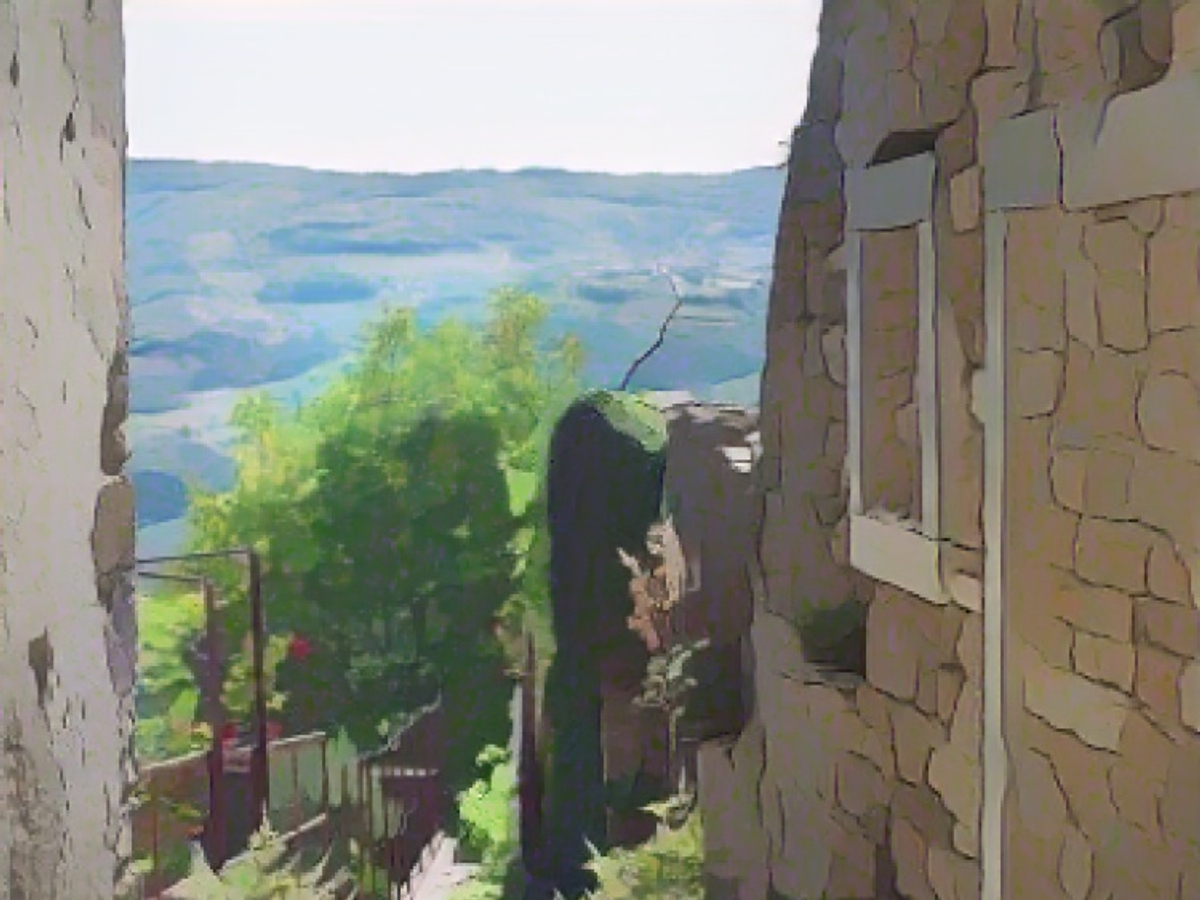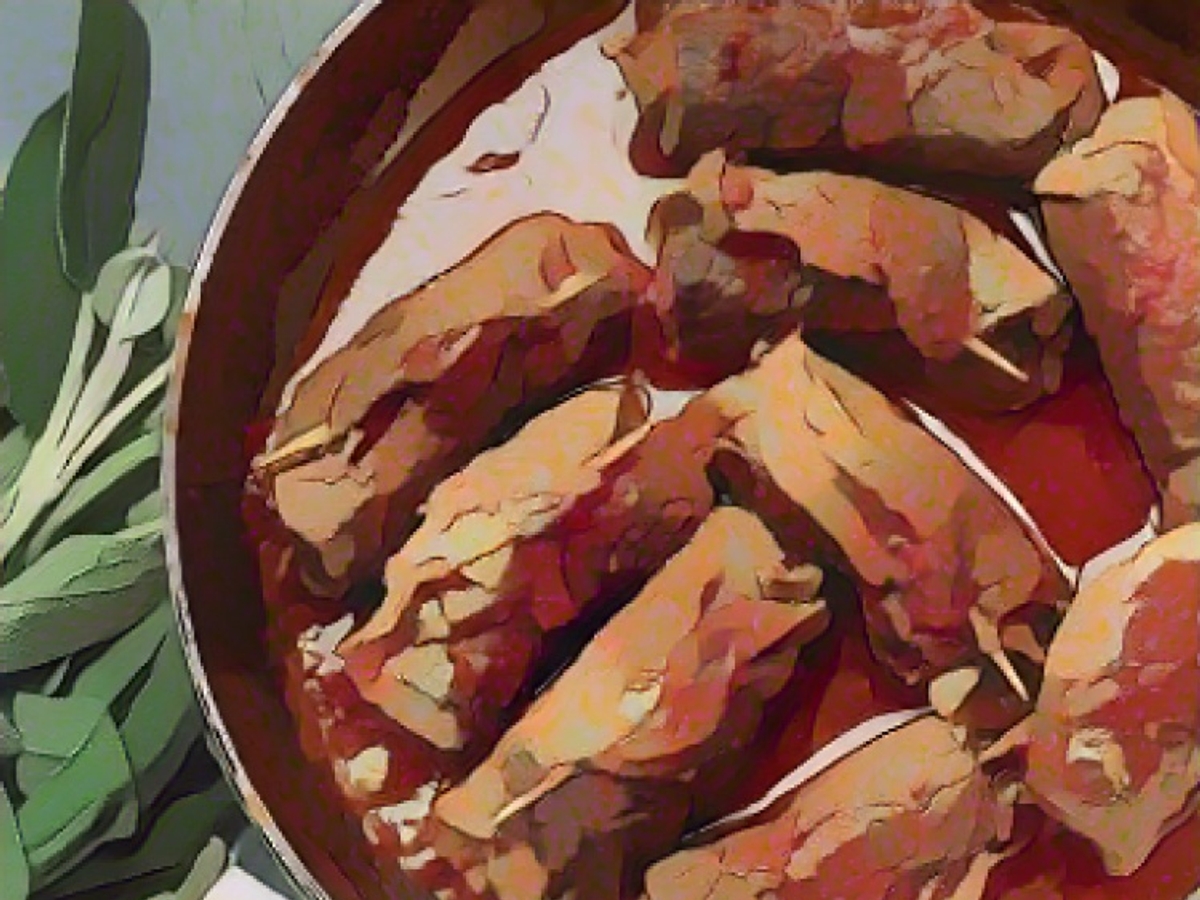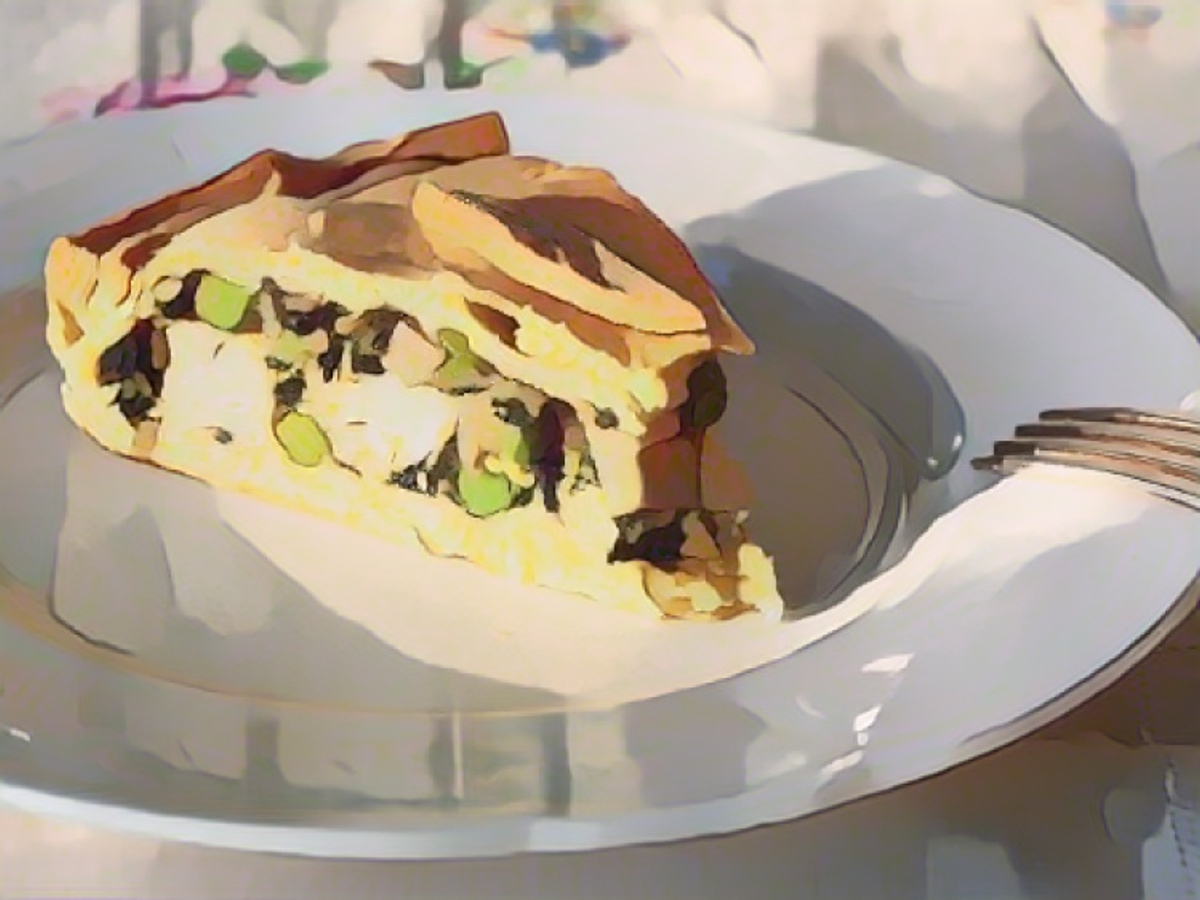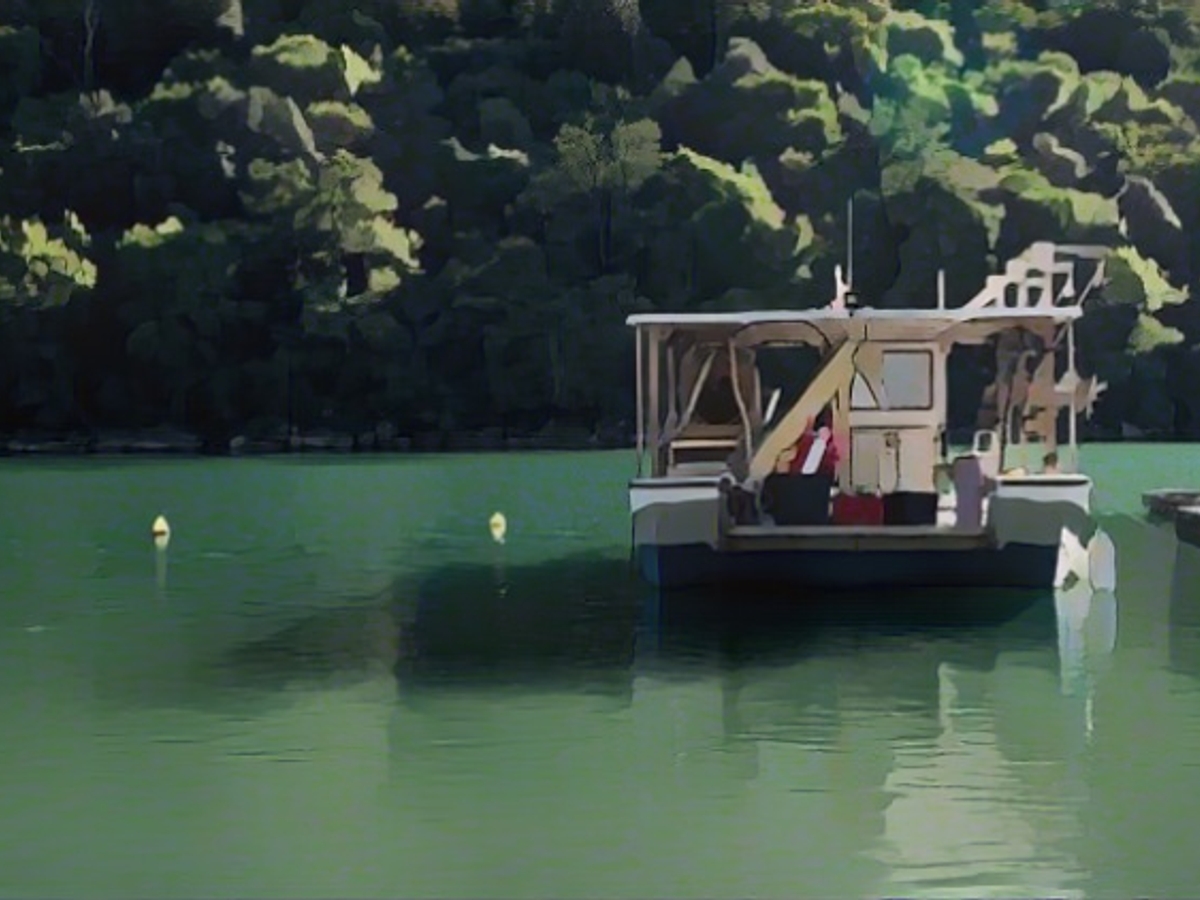Paola Bacchia cooks from her Istrian roots
Istrian cuisine is the result of an eventful history. Here, influences from Croatia, Italy, Slovenia and Austria come together to create a culinary melting pot. Australian Paola Bacchia grew up with this unique cuisine.
Paola Bacchia was born in Melbourne and is now a well-known Australian food writer. However, her roots are not Down Under, but in Europe - on the largest peninsula on the northern Adriatic: Istria. When Istria fell to Yugoslavia after the Second World War, her Italian-born parents emigrated to Australia in 1950, like many of their compatriots. As true "istriani", they took their culture with them, lived it further afield and passed it on to their descendants.
In her new cookbook "Istria", which has been nominated for the German Cookbook Prize 2023 in the "Mediterranean Cuisine" category, Bacchia writes about this inseparable connection between food, community and memory: "Food knows no borders". With recipes such as palacinche, hand-rolled macaroni, stuffed sardines or goulash with sauerkraut, she revives Istrian culture and finds her way back to her family's past. The dishes bear witness to the ever-changing borders and different cultures that once shared the Istrian hills, coasts and valleys and are deeply interwoven with the peninsula. A cookbook that takes you right into "the heart of the Adriatic". And that is also the subtitle of the book published by ars vivendi, a beautiful hardcover with foil print and color cut.
The dishes are described in detail and the recipes are clearly divided into ten chapters, ranging from soups and starters to sauces and preserves. Basic recipes for broths, pasta or pancakes are included, as are ideas for flavoring grappa. Many dishes have an Italian touch, which is of course due to the author's family background, and yet they are really good Istrian home cooking - with all the culinary influences from Slovenia, Austria, Italy and Croatia. Which brings us back to the eventful history of Istria, because that is what characterizes this book.
Cuisine knows no borders

Over the centuries, the heart-shaped peninsula has been under four different flags, apart from the Romans. Because of course they were here too: Amphitheaters, gates, columns, mosaics and villas or their restored remains bear witness to this. Today, most of Istria belongs to Croatia, a smaller part in the north to Slovenia and an even smaller area around the village of Muggia to Italy. In the 18th century, the peninsula also became part of the Habsburg monarchy. This cultural melting pot has also left its wonderful influences on the dining tables and provided the most diverse flavors. Istria is officially bilingual, but there are also dialects that very few people speak today. "My mother tongue is neither English nor Italian, but dialetto (dialect)," writes Paola Bacchia. "It is essentially of Venetian origin and is also known as Istrian-Venetian." She grew up with this dialect, which has been spoken in the west of the peninsula for a millennium and has been part of Croatia's national intangible cultural heritage since 2021.
"Istria. The Heart of the Adriatic" is a book that not only reflects the cuisine of a multi-ethnic region, but also its unique history, as the author tells us about the loss of home and the comfort of a familiar meal when she introduces us to Mama Livia's fish stew or Alice's meatballs, Mario's gratinated mussels or Balkan-style grilled skewers. Between the recipes, there are always photos and touching family stories: Getting to know each other and falling in love, parental concerns, worries and fears, grief and loss - but also carefree outings and happy celebrations. Many old black and white photos of family and friends give us a glimpse into the past. Color photos bear witness to the present Istria and the everlasting beauty and romance of the island.
Small meat roulades (Useleti scampai)

Useleti (or oseleti) is dialect and means "little birds" (uccellini in Italian), which these small meat roulades are supposed to resemble. This is a Venetian dish from the time when people ate small stewed birds served with polenta. Useleti, also called useleti scampai ('escaped little birds' - although I suspect they've probably already been caught by the time they're in the pot!) are traditionally made from thin slices of veal, topped with smoked ham or pancetta and sage leaves and rolled up before being pan-fried in a sauce of wine, a little tomato and the juices from the roast. I got the inspiration for this recipe from my Aunt Dina, who makes them in a similar way, adding cheese to the filling. Serve with polenta or mashed potatoes with onions and olive oil to soak up the delicious juices.
Preparation:
Sprinkle the veal slices with salt. Place the pancetta and ham slices on top of each other (they should be slightly smaller than the meat). Then place 1 sage leaf and 1 cheese stick on each end - the cheese should be slightly shorter than the short side of the meat (i.e. shorter than 6 cm). Roll up the meat and secure with a toothpick.
Pour the olive oil into a pan in which the roulades can sit side by side (they will still shrink a little when braised) and heat over a medium-high heat. Add the roulades and brown for about 3 minutes on each side, turning frequently.
Pour in the wine, tomato purée and 185-250 ml water so that the roulades are covered about halfway with liquid. Bring to the boil, then reduce the temperature. Put the lid on the pan and simmer gently for about 30 minutes, turning the roulades occasionally so that they are covered in the gravy. Remove the lid for the last 10 minutes so that the sauce thickens. The meat should be cooked and tender after 40-50 minutes.
If there is too much sauce in the pan, remove the roulades and place on a warmed plate, then increase the temperature and reduce the sauce to the desired consistency. Additional salt should not be necessary, but season to taste again to be on the safe side. Serve the roulades warm, drizzled with sauce, on a bed of polenta if you like it traditional.
Chard and cauliflower tart (Torta salata con blede e cavolfiore)

This vegetarian tart is based on a recipe from the Marchesa Eta Polesini. It uses what she calls "la famosa pasta speciale" (the famous special pasta dough), an all-purpose dough for beginners that does not need to be blind-baked, which, as she writes, makes it special. Unlike most types of dough, the baking powder is only incorporated into the dough after it has rested. I modify the original recipe and replace some of the wheat flour with spelt flour, which gives the tart a nuttier taste and a darker color. This is an excellent dough that can be rolled out very thinly. Leftover vegetables from the fridge or pantry are used for the filling. Feel free to replace the vegetables in the recipe with whatever you have on hand, just make sure the quantities remain roughly the same. Marsala as a braising liquid gives the vegetables a nice sweetness.
Preparation:
To make the dough, work the flours and 1 hefty pinch of salt into the butter with your fingertips until fine crumbs form (alternatively, use a food processor). Add the eggs and rum and knead everything into a smooth dough. Shape into a ball on a floured work surface, wrap in cling film and leave to rest in a cool place for 1 hour.
For the filling, heat the olive oil and butter in a large pan over a medium heat. Add the chard and onion and a good pinch of salt and sauté for about 10 minutes without browning. Meanwhile, chop the cauliflower (including the stalk) into pieces no larger than 1 cm.
Add the garlic to the chard and onion mixture and fry until fragrant. Then add the cauliflower and peas and heat through, then pour in the Marsala and increase the heat to medium-high. Cook for a few minutes, then put a lid on and cook on a low heat for a further 12 minutes until the cauliflower is soft. If there is too much liquid in the pan, remove the lid and cook for a few more minutes to reduce.
Pour the mixture into a large bowl and leave to cool. Add the remaining ingredients for the filling and season with salt and pepper. Mix everything together and set aside.
Preheat the oven to 160 °C (fan oven). Line a tart tin (24 cm Ø) with baking paper (mine has a removable base). Grease the sides of the tin carefully with butter.
Sprinkle the dough ball with baking powder and knead quickly and vigorously. Cut off about a third of the dough and use it later for the top of the tart. The larger portion is for the base and sides.
Roll out the larger portion of dough on a lightly floured work surface into a circle that is slightly larger than the tin. Place it over the mold and press it in; a little should hang over the edge. Spoon the filling over the base.
Roll out the lid from the remaining pastry and place it on top of the filling. Fold the overhanging pastry over the lid to form a raised edge around the top. Cut out shapes as desired from any leftover pastry and decorate the top of the tart with them. Poke a small hole in the center of the lid to allow steam to escape.
Bake for 50-55 minutes, checking regularly to make sure the surface is not getting too dark. If necessary, reduce the oven temperature slightly. The tart is done when the top is firm and golden brown.
Place on a wire rack and serve warm or room temperature. Once cooled, it will keep for 3-4 days in a sealed tin in a cool place.
Heidi Driesner hopes you enjoy your culinary journey to the heart of the Adriatic.
Paola Bacchia's cookbook, "Istria", showcases the diversity of flavors and culinary influences from Croatia, Slovenia, Austria, and Italy. Her recipes, such as palacinche and goulash with sauerkraut, are a testament to the rich history and cultural melting pot of Istria (Nutrition).
Reviews of "Istria" have praised Bacchia's ability to capture the essence of Istrian cuisine and her family's heritage. With her cookbook, she invites readers on a journey to the heart of the Adriatic, offering them a taste of the unique food culture of Istria, Australia, and Europe (Reviews).
Additionally, it would be interesting to explore how Austrian and Slovenian cuisines have played a role in shaping the culinary landscape of Istria and Paola Bacchia's upbringing. For example, how has Austrian influence impacted the use of spices and baking techniques in Istrian cooking, or how has Slovenian cuisine influenced the preparation of traditional Istrian dishes? (Australia, Croatia, Slovenia)
Source: www.ntv.de






